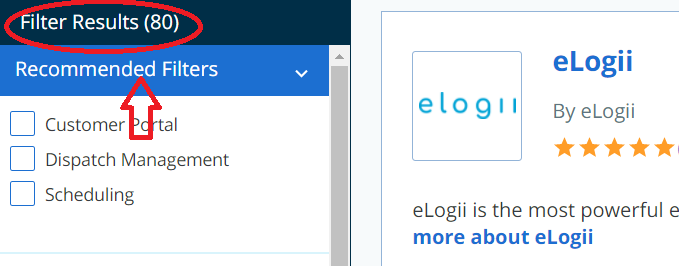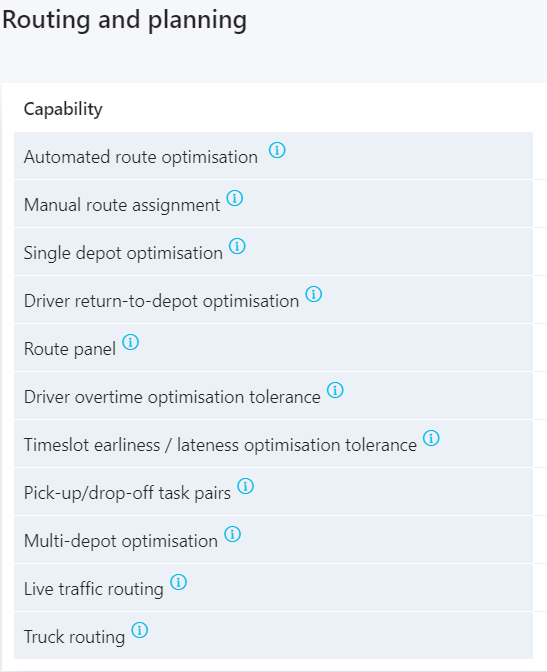How to Choose the Best Route Optimization Software?
In this new post, we show you how to choose the best route optimization software for your business with fifteen things you have to consider.
Home > Blog > How Much Does Delivery Management Software Cost?
Delivery LogisticsIn this post, we discuss the cost of delivery management software. Including, pricing examples and what will determine how much you pay for the software.
In this new post, we’ll discuss the cost of delivery management software. More precisely:
Plus, we’ll show you how you can make your last-mile delivery more cost-effective today.
(But more on that later)
Right now, let’s first take a look at what exactly is delivery management software.
Delivery management software (DMS) is a logistics tool used for managing the entire delivery operation. That includes route planning, route optimization, fleet, vehicle, and driver managing, scheduling pick-ups and drop-offs, and reverse logistics.
Thanks to API integration, delivery management software can connect to other essential logistics tools, including:
Integrating the software with other systems enables you to take a holistic approach to manage the entire supply chain. And without the need to switch between multiple apps.
Delivery management software is a centralized system, as well.
So whether you choose to use it is a question of whether to centralize or not to centralize delivery operations.
At any rate, it enables you to control the entire life cycle of each delivery using just one platform. From the moment you source it until your driver places it in your customer’s hands.
Usually, the delivery management platform has two main components:
Depending on the software, you can gain access to several different features and capabilities:
In brief:
Delivery management software like eLogii is an end-to-end solution for handling logistics that gives you all the tools necessary to satisfy the demands and requirements of your delivery operations.
That includes setting up and integrating the system with your delivery and making it ready for use.
Now that you know what is delivery management software, how much is it worth?
There are a lot of options available to you when choosing delivery software for your business.
But to give you a better understanding of the cost, we did a little research. And based on our comparative analysis, here’s what we found:
On average, the price of delivery management software is $182.35 per month.
But a lot of factors determine the price of delivery management software.
Each provider has its price per subscription and a different billing method. And that makes things complicated for you.
So, we simplified things a little.
We took a basic delivery model and calculated the price of a subscription for a business that operates five vehicles and completes 1000 deliveries per month.
Based on those parameters, we were able to consolidate the prices of the delivery management software on the market.
And this is what we found out:
Onfleet: $149.00/month
Route4me: $149.00/month
eLogii: $159.00/month
Tookan: $159.00/month
Optimoroute: $175.50/month
Routific: $195.00/month
Getswift: $290.00/month
Of course, this price comparison doesn’t give you the complete picture.
Most of these solutions are different from one another based on the actual billing method and the features they include.
Some providers bill subscribers per delivery (Getswift), while others do it per vehicle (Routific) or driver (Optimoroute).
Most base their price according to a subscription plan (eLogii, Onfleet, Tookan, Route4me), including SaaS companies with quote-based plans like Bringg.
Some providers don’t include all of the features and capabilities in their offers and bill them separately.
However, most, if not all of the companies offer monthly or annual billing.
But how do you know whether the cost is worth it?
To answer that, let’s take a closer look at what influences the price.
There are a lot of things to consider when figuring out the cost of delivery management software.
For starters, there are a lot of solutions available from which to choose.
In fact, if you do a quick search on Capterra, there are more than 80 reviews of the delivery management software.

Source: Capterra.com
Each one of those systems has a different price.
Each one of them also has a different feature list. Not to mention, other factors determine their price, as well.
But we’ve narrowed it down for you. And we chose three main factors that we believe affect the price of delivery management software the most.
Here’s what we have considered:
1. Features
2. Software deployment (on-premise vs SaaS)
3. The length of your contract
4. The size of your contract
5. Free Trials
Features and capabilities of a solution determine the price of delivery management software.
If you’re looking for delivery software for small business, then you may be satisfied with the basic features. So, the price will be affordable.
If, on the other hand, you are looking for an enterprise-grade solution, the cost can increase significantly. The same is true if you need specific or custom add-ons.
For example, eLogii has 90+ unique features.
This is only a list of our routing and planning capabilities:

See the full list of features and capabilities of our software.
But some of our customers don’t need to use all of them.
That’s why we have different business options available.
So you can find the best solution based on the size and shape of your delivery and the nature of your industry.
At the same time, some solutions are more specialized for various logistics operations.
For example, you might need a system for carrier shipping, global supply chain management, transportation management, or truck tracking.
That will also affect the price.
Technically, the more complex the logistical needs of your operations are, the more robust the software needs to be. And the higher the price you will have to pay.
But the cost isn’t just about features. It’s defined by other things, as well. Like deployment.
There are two kinds of software deployment when it comes to delivery management apps: on-premise and software as a service (SaaS).
Typically, on-premise solutions are more expensive than SaaS.
With on-premise delivery management software, you purchase the perpetual license or a sanctioned copy of the software. And you use your private digital infrastructure to operate the system.
So, on-premise software solutions have enormous capital expenditure (Capex).
And although operating expenses (Opex) are low, you still have to purchase software updates. So there are extra costs every time the provider rolls out a new upgrade.
By contrast, SaaS-based solutions are much more affordable.
Instead of paying a large sum upfront, adopting a cloud-first approach to delivery logistics means you subscribe to use the software.
For a monthly or annual subscription, you get access to the software via the public cloud.
So, there are no Capex requirements in terms of infrastructure, software updates, or systems integration. All of that is automatically rolled-out.
However, Opex is substantially higher due to the subscription. But only over a lengthy period.
That’s why a contract with a SaaS provider is typically the more affordable choice than an on-premise alternative.
But the contract also determines how much you will pay.
So, let’s take a look at how the subscription plan affects the price.
After you’ve decided on what type of software you want and the features it has to have, it’s time to draw up a contract.
That is an ideal chance for you to lower the price of your subscription because the size and length of your contract determine the cost of delivery management software.
In some cases, providers offer subscriptions that include 12, 24, 36-month contracts.
To incentivize long-term commitment, the longer the contract lasts, the more affordable the terms of your agreement.
But the price also depends on whether you want to get billed monthly or annually.
Typically, the price is 20% lower if you decide to get billed annually.
And then there is the pay-as-you-go pricing plan:
If you are unsure about a solution, you can choose the pay-as-you-go pricing model.
Pay as you go is a highly flexible payment model. It allows you to terminate the contract at any time regardless of the package you choose.
At the same time, it allows you to scale quickly.
With pay-as-you-go, you can switch between pricing plans depending on your need to upscale or downscale the cost of operations.
For example, you can reduce the cost of your subscription if you experience lower order volumes (such as the case with the state of last-mile delivery in time of the coronavirus).
On the other hand, you can subscribe to a higher-tier package and gain advanced functionality when demand exceeds your capacity.
However, this comes at a price.
Because of its many benefits, the cost of a delivery management software subscription is 35% higher with a pay-as-you-go pricing plan.
But there is another aspect to your contract that you need to consider.
When talking about the size of the contract, we mean:
Providers calculate this price per month regardless of the length of your subscription.
On the other hand, some providers take a different approach.
Some SaaS companies design specific plans based on:
Typically, these pricing plans cater to various types of organizations:
Let’s briefly take a closer look at each option:
The core function of any delivery management platform is a task. Each task represents a delivery which you assign to a driver using the dashboard on your account.
On average, the cost per task is between $0.10 and $0.25.
For enterprise-grade solutions, the average cost per task can be as high as $1.00.
If you have fixed routes and know exactly how many deliveries you will complete per month, then this option is for you.
Otherwise, you risk exceeding the budget in times when order volumes skyrocket, like Black Friday, Cyber Monday, or the Christmas shopping season.
Some software providers charge subscriptions according to the number of drivers in your fleet.
Each driver represents a user (or delivery agent) on the dashboard.
In some cases, providers limit the number of users you can create. That prevents you from implementing tactics to grow your delivery operations and scaling your organization.
In others, this number doesn’t impact the cost of your subscription at all. Instead, you can use it as one of the key metrics in delivery logistics to determine the cost-effectiveness of your fleet.
The cost of delivery management software per driver varies a lot and can be between $2.00 and $35.00.
So, there is a lot for you to consider.
Luckily, many SaaS companies provide a solution for that, as well.
Free trials help you test the capabilities of the software in real-life situations before you commit to a long-term contract.
That is an advantage of cloud-based solutions. You can immediately create an account online and start using the software just as if you had a paid subscription.
When you start the free trial, usually, you receive a tutorial and a live demonstration of the software properties.
In general, a delivery management software free trial is a limited offer. Typically, you gain access to a trial version that lasts for two weeks (14 days).
Once it ends, you can choose to subscribe or continue your search with no strings attached.
And get the best value out of delivery management software.
We have everything you need to start improving your delivery.
In this new post, we show you how to choose the best route optimization software for your business with fifteen things you have to consider.
The driver app is a principal feature of route optimization software. Today, we’ll discuss why the app has to support both Android and iPhone (iOS).
If a driver app is a key feature you’re looking for in delivery management software, this post shows you exactly how to choose the best delivery...
Be the first to know when new articles are released. eLogii has a market-leading blog and resources centre designed specifically to help business across countless distribution and field-services sub sectors worldwide to succeed with actionable content and tips.
